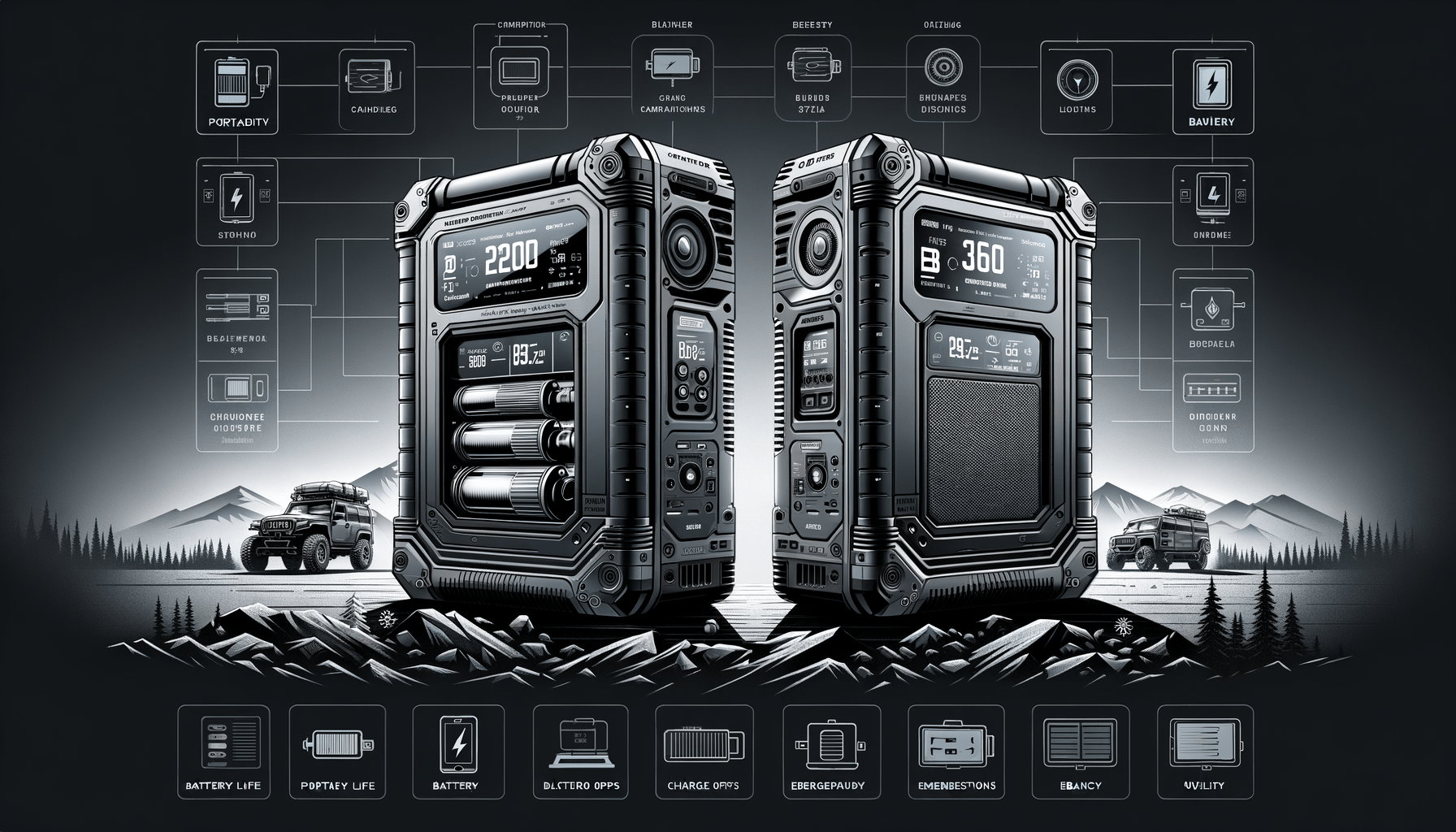When it comes to preparedness and adventure, a reliable portable power station can be your best ally. Today, we’re exploring the ins and outs of two popular options—the Renogy 500 and the EcoFlow River Pro—to help you decide which power station best fits your energy needs.
Key Technical Specifications
| Renogy 500 | EcoFlow River Pro | |
|---|---|---|
| Capacity | 495Wh | 720Wh |
| Inverter | 800W Pure Sine Wave | 600W (Surge 1200W) |
| Surge Capability | 1600W | 1200W |
| Charge Times | 1-Hour AC Fast Recharge (iTurbo) | 0-80% in 1 hour, Full recharge in 1.6 hours |
| Cycle Life | Not specified | 800+ cycles to 80%+ capacity |
| Output Ports | Multiple, including USB-C 100W | Multiple, including USB-C |
| Solar Charging Compatible | Yes, with e.flex 220W | Yes, up to 200W |
| Expansion Capability | iStack function for parallel connection | Double capacity with extra battery |
| Remote Monitoring and Control | Yes, via DC HOME app | Yes, via mobile application |
| Warranty | Not specified | 24 months |
| Dimensions | 12.76 x 8.19 x 9.43 inches | 11.4 x 7.1 x 9.3 inches |
| Weight | 16.71 lbs. | 16.8 lbs. |
Design and Portability
When comparing portability, both power stations boast compact designs that lend themselves to easy handling and transportation. The Renogy 500 edges slightly ahead in weight, but EcoFlow River Pro offers a beefier battery capacity in nearly the same footprint.
Charging and Energy Usage
If charging speed is your priority, both the Renogy 500 and EcoFlow River Pro offer fast charge capabilities, but their technologies differ. Renogy’s iTurbo promises rapid charging, while EcoFlow’s X-Stream tech ensures your River Pro goes from 0 to 80% in just an hour.
Output and Capacity
With a larger battery capacity, the EcoFlow River Pro can store more power, translating to longer usage time. The Renogy 500, although with a smaller capacity, sports a higher inverter output which is ideal for heavy-duty electronics.
Remote Management Features
Both units allow for monitoring and control through respective apps, eliminating the guesswork in power management whether at home or in the wild.
Expansion and Compatibility
The Renogy 500’s iStack function and EcoFlow River Pro’s additional battery capability illustrate each brand’s approach to scalability. This means you can tailor the storage to your power demands.
Safety and Durability
Safety and efficiency are paramount. The Renogy 500’s BMS and EcoFlow River Pro’s battery chemistry and operating temperature ranges reflect their strong commitments to safety.
Conclusion
Deciding between the Renogy 500 and the EcoFlow River Pro boils down to your specific power needs, desired portability, and expansion plans. Both offer great features, but your choice will hinge on which specifications align most closely with your energy consumption patterns.




Leave a Reply